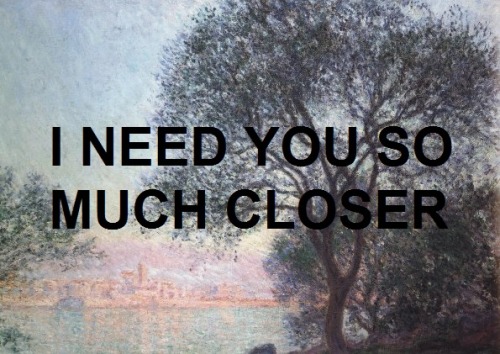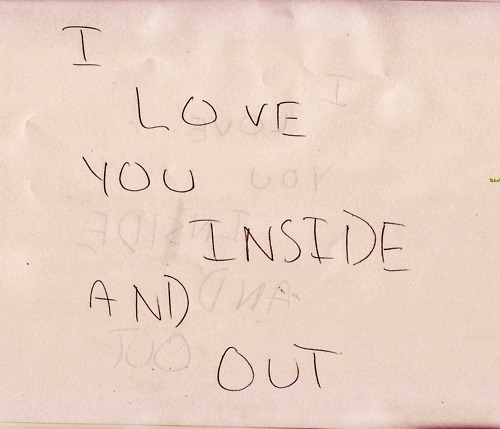Nmartinez930301-blog - Nallely Martínez

More Posts from Nmartinez930301-blog and Others
Seeing El Niño…From Space
First, What is El Niño?
This irregularly occurring weather phenomenon is created through an abnormality in wind and ocean circulation. When it originates in the equatorial Pacific Ocean. El Niño has wide-reaching effects. In a global context, it affects rainfall, ocean productivity, atmospheric gases and winds across continents. At a local level, it influences water supplies, fishing industries and food sources.
What About This Year’s El Niño
This winter, weather patterns may be fairly different than what is typical — all because of unusually warm ocean water in the east equatorial Pacific, aka El Niño. California is expected to get more rain while Australia is expected to get less. Since this El Niño began last summer, the Pacific Ocean has already experienced an increase in tropical storms and a decrease in phytoplankton.
How Do We See El Niño?
Here are some of El Niño’s key impacts and how we study them from space:
Rainfall:

El Niño often spurs a change in rainfall patterns that can lead to major flooding, landslides and droughts across the globe.
How We Study It: Our Global Precipitation Measurement mission (GPM), tracks precipitation worldwide and creates global precipitation maps updated every half-hour using data from a host of satellites. Scientists can then use the data to study changes in rain and snow patterns. This gives us a better understanding of Earth’s climate and weather systems.
Hurricanes:

El Niño also influences the formation of tropical storms. El Niño events are associated with fewer hurricanes in the Atlantic, but more hurricanes and typhoons in the Pacific.
How We Study It: We have a suite of instruments in space that can study various aspects of storms, such as rainfall activity, cloud heights, surface wind speed and ocean heat.
Ocean Ecology:

While El Niño affects land, it also impacts the marine food web, which can be seen in the color of the ocean. The hue of the water is influenced by the presence of tiny plants, sediments and colored dissolved organic material. During El Niño conditions, upwelling is suppressed and the deep, nutrient-rich waters aren’t able to reach the surface, causing less phytoplankton productivity. With less food, the fish population declines, severely affecting fishing industries.
How We Study It: Our satellites measure the color of the ocean to derive surface chlorophyll, a pigment in phytoplankton, and observe lower total chlorophyll amounts during El Niño events in the equatorial Pacific Ocean.
Ozone:

El Niño also influences ozone — a compound that plays an important role in the Earth system and human health. When El Niño occurs, there is a substantial change in the major east-west tropical circulation, causing a significant redistribution of atmospheric gases like ozone.
How We Study It: Our Aura satellite is used to measure ozone concentrations in the upper layer of the atmosphere. With more than a decade of Aura data, researchers are able to separate the response of ozone concentrations to an El Niño from its response to change sin human activity, such as manmade fires.
Fires:

El Niño conditions shift patters of rainfall and fire across the tropics. During El Niño years, the number and intensity of fires increases, especially under drought conditions in regions accustomed to wet weather. These fires not only damage lands, but also emit greenhouse gases that trap heat in the atmosphere and contribute to global warming.
How We Study It: Our MODIS instruments on Aqua and Terra satellites provide a global picture of fire activity. MODIS was specifically designed to observe fires, allowing scientists to discern flaming from smoldering burns.
Make sure to follow us on Tumblr for your regular dose of space: http://nasa.tumblr.com

Love doesn’t hurt. Expectations do.
life (via frequents)
tru
(via waakeme-up)

Vintage Spaceships Mini Poster
I love you not as lover to lover, love to love, but as personality to personality, spirit to spirit, soul to soul
36n36 (via wnq-writers)
And I realized that there’s a big difference between deciding to leave and knowing where to go.
Robyn Schneider, The Beginning of Everything (via wordsnquotes)


i should really stop developing crushes on people i can’t touch
Be proud of yourself for how hard you’re trying.
mhconsumer (via mhconsumer)
👌
-
 s-h-y-y-a-n-n-e liked this · 4 months ago
s-h-y-y-a-n-n-e liked this · 4 months ago -
 tropical-ninja-shawty liked this · 4 months ago
tropical-ninja-shawty liked this · 4 months ago -
 higashiyamayukijoe liked this · 6 months ago
higashiyamayukijoe liked this · 6 months ago -
 annas8grq liked this · 6 months ago
annas8grq liked this · 6 months ago -
 annalgyrg liked this · 7 months ago
annalgyrg liked this · 7 months ago -
 theporcelainheart liked this · 7 months ago
theporcelainheart liked this · 7 months ago -
 panncito liked this · 7 months ago
panncito liked this · 7 months ago -
 werewolff liked this · 7 months ago
werewolff liked this · 7 months ago -
 starrynightxoxo reblogged this · 7 months ago
starrynightxoxo reblogged this · 7 months ago -
 starrynightxoxo liked this · 7 months ago
starrynightxoxo liked this · 7 months ago -
 sufiblackmamba reblogged this · 7 months ago
sufiblackmamba reblogged this · 7 months ago -
 sufiblackmamba liked this · 7 months ago
sufiblackmamba liked this · 7 months ago -
 lnocencia reblogged this · 7 months ago
lnocencia reblogged this · 7 months ago -
 le-delugee liked this · 8 months ago
le-delugee liked this · 8 months ago -
 tha28 liked this · 8 months ago
tha28 liked this · 8 months ago -
 thelastdreamaboutyou reblogged this · 8 months ago
thelastdreamaboutyou reblogged this · 8 months ago -
 declinio reblogged this · 8 months ago
declinio reblogged this · 8 months ago -
 m-i-r-r-o-r-s reblogged this · 8 months ago
m-i-r-r-o-r-s reblogged this · 8 months ago -
 mina-obscura reblogged this · 8 months ago
mina-obscura reblogged this · 8 months ago -
 unsteading liked this · 8 months ago
unsteading liked this · 8 months ago -
 descrevos reblogged this · 8 months ago
descrevos reblogged this · 8 months ago -
 amitybrightlights liked this · 9 months ago
amitybrightlights liked this · 9 months ago -
 sofibm reblogged this · 9 months ago
sofibm reblogged this · 9 months ago -
 dissociety reblogged this · 9 months ago
dissociety reblogged this · 9 months ago -
 starsinhereyesworld reblogged this · 10 months ago
starsinhereyesworld reblogged this · 10 months ago -
 omgherbalicious reblogged this · 10 months ago
omgherbalicious reblogged this · 10 months ago -
 omgherbalicious liked this · 10 months ago
omgherbalicious liked this · 10 months ago -
 bringouturdeath liked this · 11 months ago
bringouturdeath liked this · 11 months ago -
 vltrvistic liked this · 11 months ago
vltrvistic liked this · 11 months ago -
 styledbeard liked this · 1 year ago
styledbeard liked this · 1 year ago
You are the person I'll never stop looking for in a crowded place.
228 posts